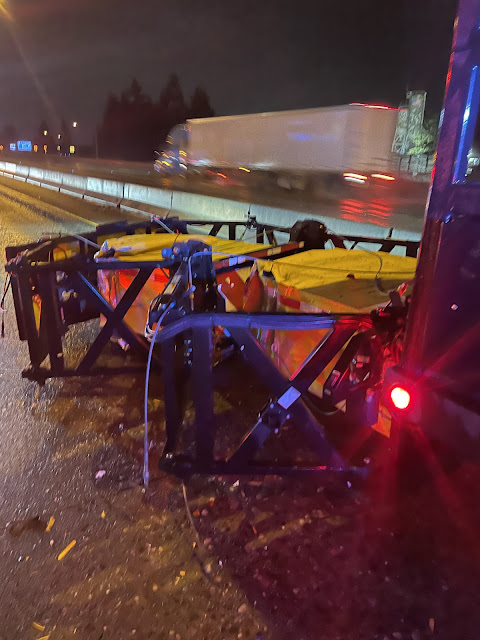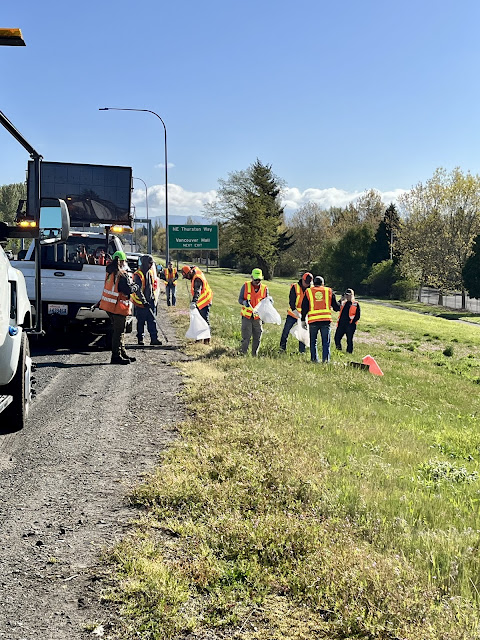By Lauren McLaughlin
At this point most everyone has received at least one suspicious email or text. You likely even know the signs: URLs that are basically alphabet soup, weird emojis, vague threats to your drivers license or “legal action.” But April marks a full year of scammers impersonating Good To Go! and trying to trick people.
The scams aren’t exclusive to WSDOT. Across the country, toll payers, drivers, and even people without cars are being targeted by similar phishing attempts. While the Federal Trade Commission (FTC) and the FBI are aware of these scams, the best thing to do is stay vigilant and know what to look for.
How do the scams work?
The texts and emails are a kind of scam called “phishing.” Phishing scams are designed to steal personal data and credit card or bank information. They are designed seem urgent in hopes that people won’t look too closely. The scams sometimes include a line about bills being due in the next few days or claim it’s a final reminder before your license is suspended or legal action is taken.
 |
| An example of one of the texts sent by scammers on March 17, showing the payment needs to be made by the next day, in hopes of causing the recipient to panic and pay immediately. |
Ultimately what the scammers want you to do is to click the link and follow it to their fake website. Then you will be prompted to enter your credit card or banking information and try to make a payment. The payment is not even necessarily the end goal. Scammers might just be getting your credit card information. Sometimes people were even told their card wasn’t valid and they needed to use a different one – giving the scammers even more card numbers.
 |
| A screenshot of a scammer-created website showing the website accepts a wide variety of payment types, but did not accept what the user tried. |
Spotting the scam
Sometimes the scams are easy to spot from a mile away, but others look far more realistic. Here’s a few tips on what to look for when you’re not sure if the text is a scam:
- Look for unusual messages: If you receive a text out of the blue about a Good To Go! account, be cautious. Our official communication is usually done via email or mail. Any texts we send would encourage you to log in to your account before taking any action. We never send texts asking for payment.
If you don’t have a Good To Go! account we would never send you a text, you would get a physical bill in the mail if you had an unpaid toll.
- Suspicious links: These scam texts often include a link asking the recipient to “click here” to pay the outstanding toll or visit a website that isn’t www.MyGoodToGo.com. You should never click on these links. Instead, log in to your account by visiting the official MyGoodToGo.com website where you can directly manage your account, or call customer service. Sometimes the scammers get tricky, and use “mygoodtogo.com” as part of their fake URL, but if there’s a string of gibberish after the.com, it’s a scam.
- Check the language: Scammers often use urgent language to pressure recipients into quick action, such as threatening your driver’s license or account suspension. Also, watch for spelling and grammar errors – these are common signs of a scam.
This is not just a problem for Good To Go! customers
Though the texts claim to be from Good To Go! the scammers are not actually targeting only Good To Go! customers. People who have never used toll roads, who do not live in Washington, and even people who do not own cars have reported getting the texts.
Steps you can take
We encourage anyone who receives a scam message to report it as a scam or phishing email through your phone or email provider. Also file a report with the Federal Trade Commission and FBI’s Internet Crime Complaint Center. As always, don’t click on unknown links.
Our response
We’re working to alert the public about these scams. We want to help prevent people from falling prey to the scammers. We’ve been posting about the scams on social media each time a new message is reported, sending customers emails warning of the scam, working with media to help reach a wider audience and posting alerts on the WSDOT website, MyGoodToGo.com and on the WSDOT app.
We’re also working with partner toll agencies around the country. Many other agencies are dealing with these scammers. We share best practices in how to respond to these scams and help customers protect themselves.










.jpg)

















